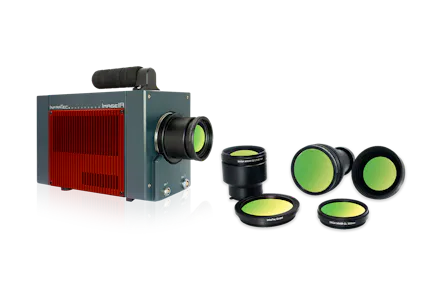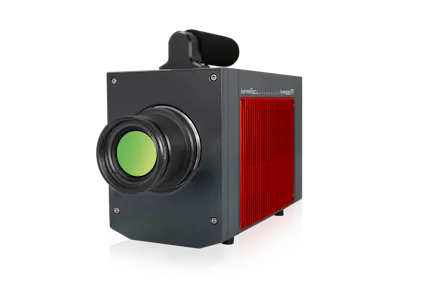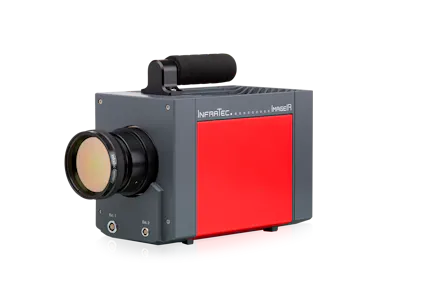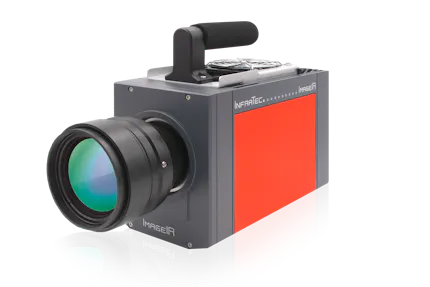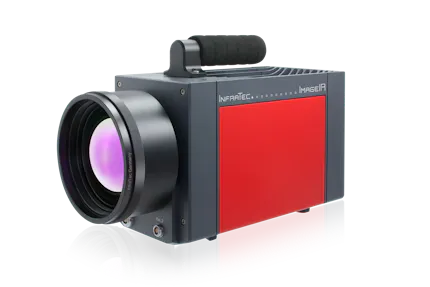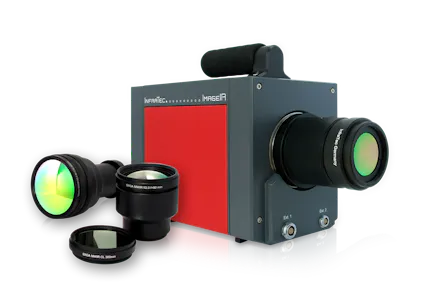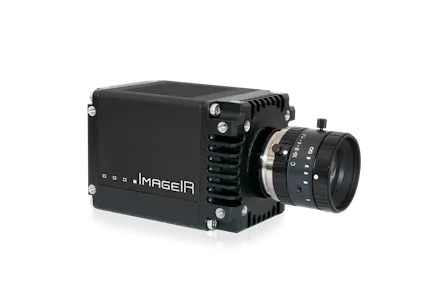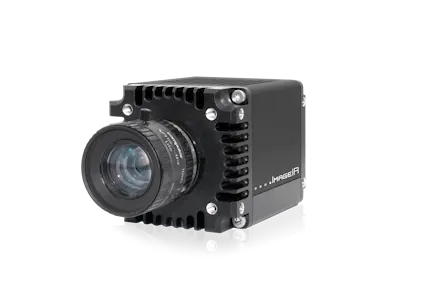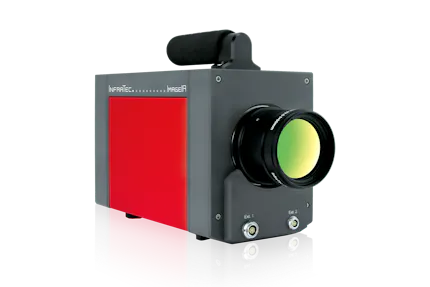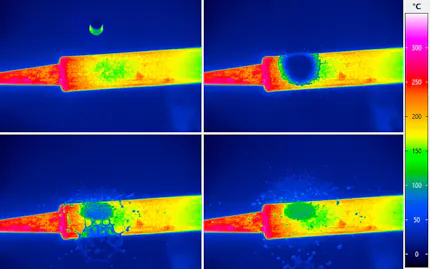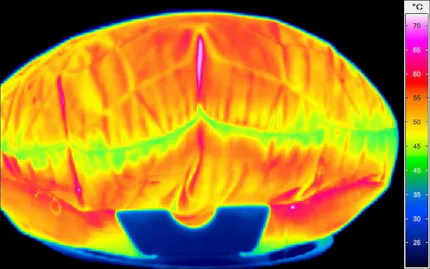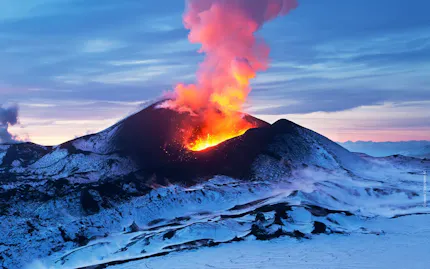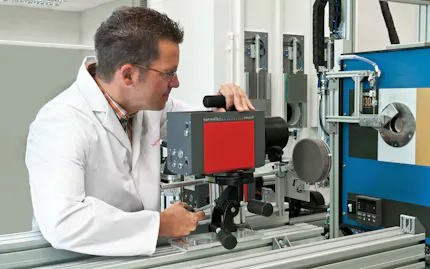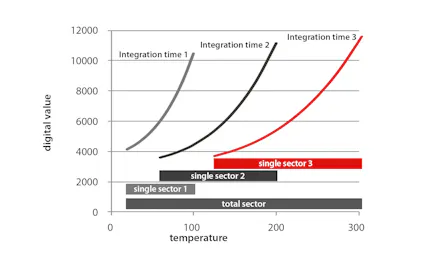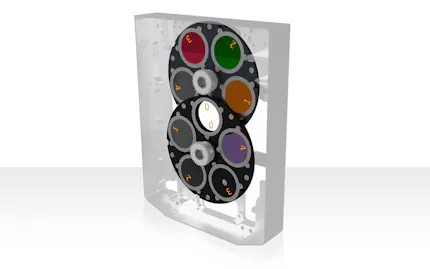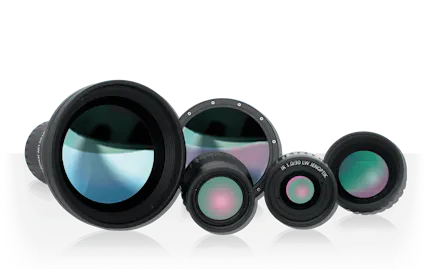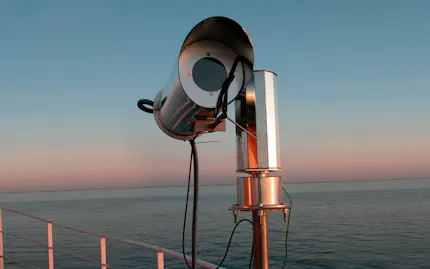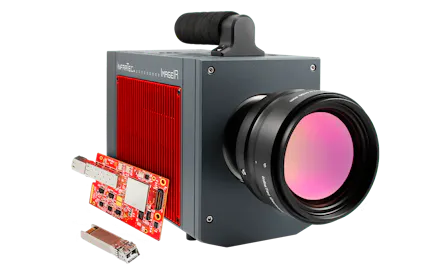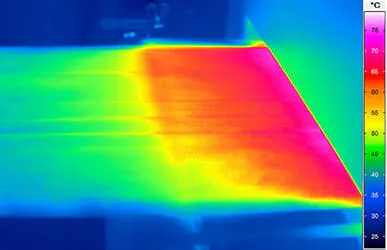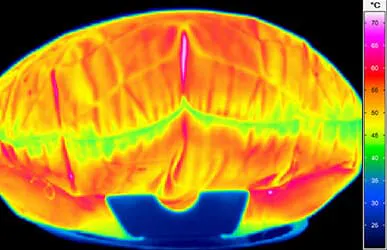Thermography for the Analysis of Combustion and Explosion Processes
Explosion and combustion processes are highly dynamic processes with big temperature changes. In order to be able to comprehensively analyse and optimise these processes high-performance thermography systems have to be used.
Thermography for the Combustion Analysis
Analysis of Combustion Processes
In combustion analysis highly dynamic sequences of combustion processes are visualised and analysed by recording temperature distributions and their temporal change with a thermal camera contact free and without feedback effects. As a result, hotspots and anomalies, among other things, can be identified, which enable conclusions concerning inefficiencies or the detection of safety issues. By using thermography, not only process optimisations are made possible, but safety risks for people and the environment are reduced as well.

The applications for thermography cameras in the field of combustion analysis are many and varied as a result:
Analysis of the temperatures and their distribution in combustion furnaces
Optimisation of internal-combustion engines and their components
Monitoring of temperatures on moving parts of turbines and compressors
Analysis of heat transfers in exhaust systems
Analysis of burner components for cracks or corrosion
Characterisation of fuels (e.g. in respect of their ignition properties)
Conclusions for energy saving potentials
Thermography Systems for the Combustion Analysis
In order to be able to record dynamic temperature changes precisely the thermography camera used has to have very short integration times and a wide temperature measuring range. These requirements are met by the infrared cameras of the ImageIR® camera series by InfraTec. Moreover, these cameras come with a Multi Integration Time Mode and the High Dynamic Range function for achieving exceptionally wide temperature measuring ranges. This allows a interrupt-free and consistent thermographic analysis of objects which can have a very large temperature gradient of up to several 100 K. By up to two integrated, motor controllable filter wheels these cameras are perfectly applicable in spectral thermography as well. As a result, up to 35 different filter combinations are available and directly accessible by the remote control of the camera. Time-consuming filter changes are a thing of the past now. The performance of the cameras is further expanded by assorted precision telephoto lenses for high-grade measurements at large measurement distances, but also by the option of combining them with close-up lenses to analyse combustion processes inside measuring chambers at high-resolution. Temperature stabilised protective housings and the possibility of integrating the fully automated operation in an existing software environment complete the spectrum of beneficial features for the combustion analysis.


Thermography for the Analysis of the Properties of Fuel Mixtures
Using thermography fuel mixtures which in liquid form are injected into the combustion chamber and ignited there, can be characterised in their ignition and combustion properties. This occurs with a variation of a great number of defined environmental conditions. To evaluate the respective mixtures the effects of the ignition spark, droplet size and distribution and also the flame transient and stagnation behaviour are observed, analysed and optimised using a high-speed thermography camera. The convenient and rapid analysis of the measurement data generated makes for a combustion chamber design with a more efficient combustion and longer service life.
What occurs in the individual processes and which insights are possible with the aid of thermography?
1. Analysis of the Ignition Sparks
With a high-speed thermography camera, it is possible to examine the maximum temperature of the spark, the spark size and the progress of the spark discharge. The effects of the most significant physical properties of the spark on the ignition of the combustion can be deduced from them. As a result, subject to the fuel mixture and concentration, it is possible, for example, to optimise the influence of the spark temperature, the active surface area and the position in the combustion chamber.
2. Analysis of the Injection System/Monitoring of the Fuel Injection
In typical internal-combustion engines for liquid fuels the efficiency of the ignition and combustion essentially depend on the size and distribution of the fuel droplets. That is why it is necessary to thermally analyse the injection processes of fuels. A very efficient method is the use of a special high-end thermography camera which is precisely synchronised with the injection cycle and whose spectral sensitivity range is concentrated on the measurement task. A good injection system sprays the fuel into the combustion chamber consistently and continuously. Thermography can be used to detect deviations that impair the efficiency of combustion.

3. Examination of the Combustion Dynamics/Combustion Reaction
Involved here is the observation of the process before the ignition point and the study of the behaviour of the maximum temperature and the total energy released, which results from the combustible surface area. The temperature peaks influence the combustion process and can even produce acoustic instabilities.

Would You Like to Know More?
It is not unusual for tasks to be associated with special requirements. Discuss your specific application needs with our specialists, receive further technical information or learn more about our additional services.
Analysing Explosion Processes Using High-speed Thermography

Thermography is a contact free and very efficient measurement method without feedback effects, which is commonly used to observe and analyse thermodynamic processes running in explosions. Thanks to the image presentation of the radiation emitted during the explosions by suitable thermography systems radiation distributions and their changes can be visualised, measured, recorded and comprehensively analysed and documented with the corresponding software.
Using high-end thermographic solutions the heat distribution throughout and after the detonation of explosives can be visualised and recorded and thereby the energy released can be analysed. Moreover, thermography makes it possible where required to measure the flame propagation speed and the combustion efficiency.


Thermography Systems for the Analysis of Explosion Processes
Just as in the case of combustion analysis, very brief integration times are required in the analysis of explosions to be able to record the intensely dynamic temperature changes without smearing effects. The thermography systems from InfraTec can also be equipped with application-specific spectral filters. Motor driven filter wheels make it possible to choose out of up to 35 filter combinations with a mouse click in the software and to adjust the camera quickly to changed measurement conditions. For images of explosions with large-scale expansions which are rich in detail thermography systems are available with a geometric resolution up to (2.560 x 2.048) IR pixels. InfraTec provides a wide selection of interchangeable lenses of different focal lengths up to 200 mm and options for motor-driven focussing including various autofocus modes. With the High Dynamic Range (HDR) function a temperature measuring range of -20°C to 3,000°C can be achieved.
The insights derived from the measurement data help, among other things, in the preparation and review of safety protocols for explosive materials or in the calculation of the amount of explosive required. explosive Materialien oder bei der Berechnung der notwendigen Sprengstoffmenge.




